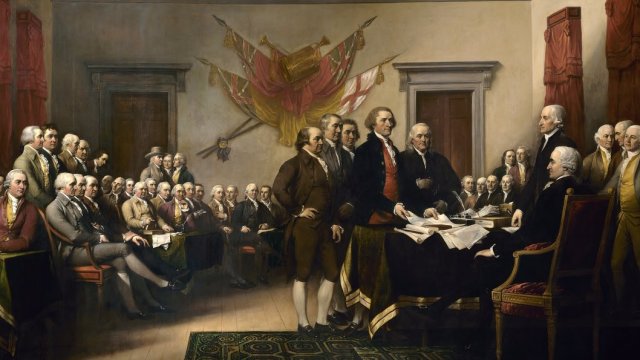How a solar eclipse first proved Einstein right

If space were really curved due to matter and energy, we should see light deflect. A solar eclipse provides the perfect opportunity.
“Eddington had needed to make significant corrections to some of the measurements, for various technical reasons, and in the end decided to leave some of the Sobral data out of the calculation entirely. Many scientists were suspicious that he had cooked the books. Although the suspicion lingered for years in some quarters, in the end the results were confirmed at eclipse after eclipse with higher and higher precision.” –Peter Coles
Albert Einstein’s general theory of relativity is our most successful, most sophisticated theory of gravity of all-time. Explaining everything from GPS signals to gravitational redshift, from gravitational lensing to merging black holes, and from the timing of pulsars to the orbit of Mercury, the predictions of General Relativity have never once failed. Yet when this theory was first introduced in 1915, it was attempting to replace Newton’s gravitation, which itself had stood unchallenged for over 200 years. Predicting that starlight should bend ever-so-slightly in the vicinity of a large mass, it seemed almost an untestable alternative to Newton’s theory. Yet the phenomenon of a total solar eclipse would allow the critical test to be performed, vindicating Einstein in a test that interested skywatchers can repeat for themselves during any total eclipse at all.

Newtonian gravity, put forth in 1687, is an extraordinarily simple law: put any masses anywhere in the Universe, a fixed distance apart, and you immediately know the gravitational force between them. This explained everything from the terrestrial motion of cannonballs to the celestial motion of comets, planets, and stars. After 200 years, it had passed every single test that was thrown its way. But one pesky observation threatened to derail everything: the detailed motion of the innermost planet in our Solar System.
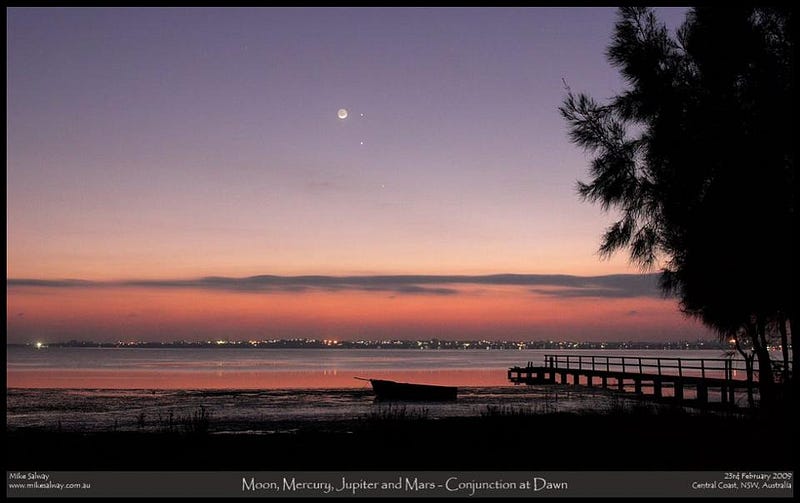
Every planet moves in an ellipse around the Sun. However, this ellipse isn’t static, returning to the same fixed point in space with every orbit, but rather, it precesses. Precession is like watching that ellipse rotate in space over time, albeit very slowly. Mercury had been observed with incredible precision since Tycho Brahe in the late 1500s, so with 300 years of data, our measurements were extraordinary. According to Newton’s theory, its orbit should have precessed by 5,557″-per-century, due to the precession of Earth’s equinoxes and the gravitational effects of all the planets on Mercury’s orbit. But observationally, we observed 5,600″-per-century instead. That difference, of 43″-per-century (or just 0.00012°-per-year), had no explanation in Newton’s framework.
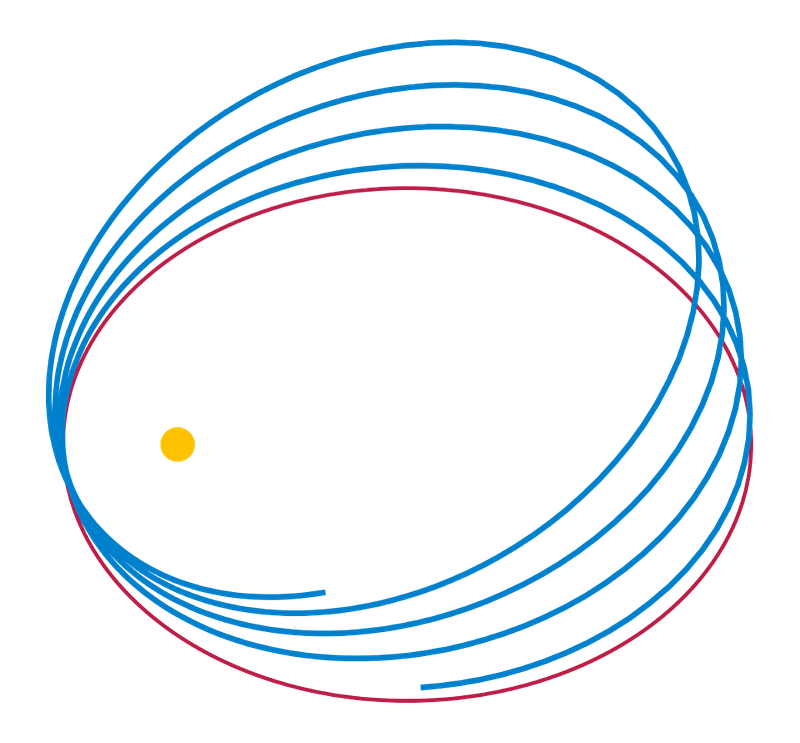
But Einstein’s new theory could account for it! He spent years developing the framework for General Relativity, where gravitation wasn’t caused by masses attracting other masses, but rather by matter and energy curving the very fabric of space, which all objects then move through. Under most circumstances, Newton’s law was a very good approximation to what Einstein’s theory laid down. At very small distances from very large masses, however, Einstein’s predictions differed from Newton’s, predicting exactly that 43″-per-century difference. Still, that isn’t enough to replace the old theory. In order to overthrow a scientific theory, a new one must do the following:
- Reproduce all the successes that the old theory enjoyed (otherwise, the old theory is still superior in some way),
- Succeed in the regime where the old theory could not (otherwise, your new theory doesn’t fix the problem with the old one),
- And to make a new prediction that you can go out and test, distinguishing between the old-and-new ideas (otherwise, you don’t have any scientifically predictive power).
That last piece is where the solar eclipse comes in.
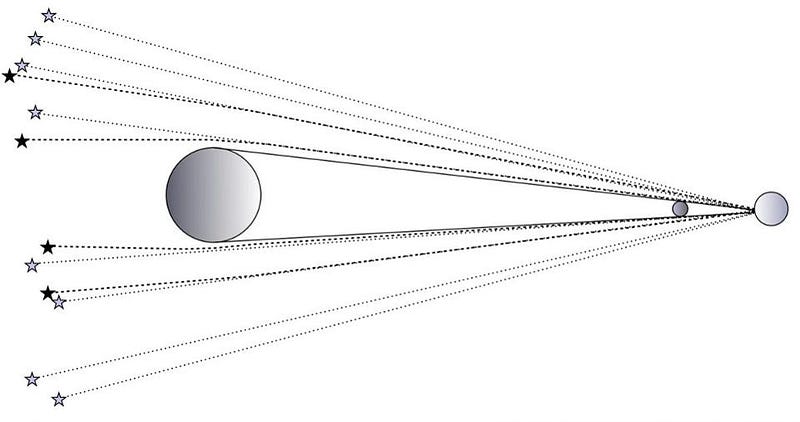
When the stars appear in the night sky, the starlight travels to our eyes from a different location in the galaxy, many light years away. If Newton was correct, that light should either travel in a completely straight line, undeflected by any masses it passes near (since light is massless), or that it should bend due to the gravitational effects of mass-energy equivalence. (After all, if E = mc², then perhaps you can treat light as have an effective mass of m = E/c².) But Einstein’s theory, particularly if light passes very close by a large mass, offers a prediction different from both of these numbers.
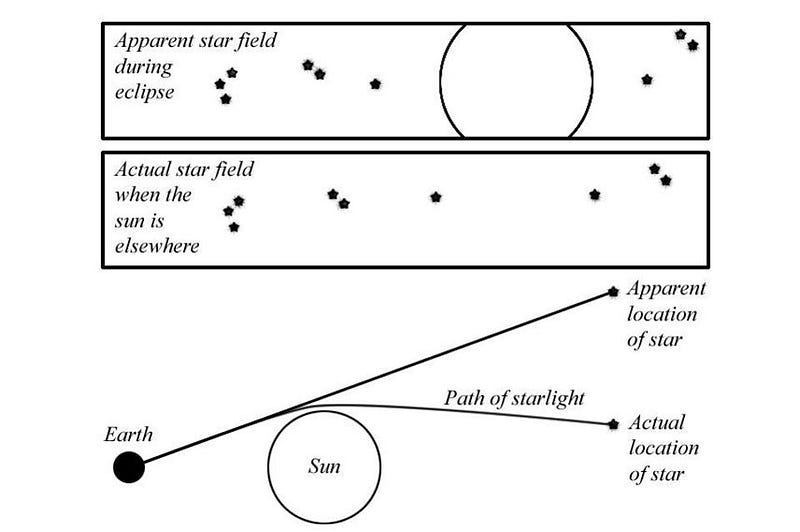
The largest mass we have close by Earth is the Sun, which normally renders starlight invisible during the day. As starlight passes near the edge of the Sun, according to Einstein, it should travel along that curved space, causing the light-path to appear bent. During a total solar eclipse, however, the Moon passes in front of the Sun, blocking its light and causing the sky to become as dark as night, enabling the stars to be seen during the daytime. When an observer on Earth sees these stars during an eclipse, their positions will appear to be shifted by a progressively larger amount the closer they are to the Sun, culminating in double the Newtonian prediction at the Sun’s edge.
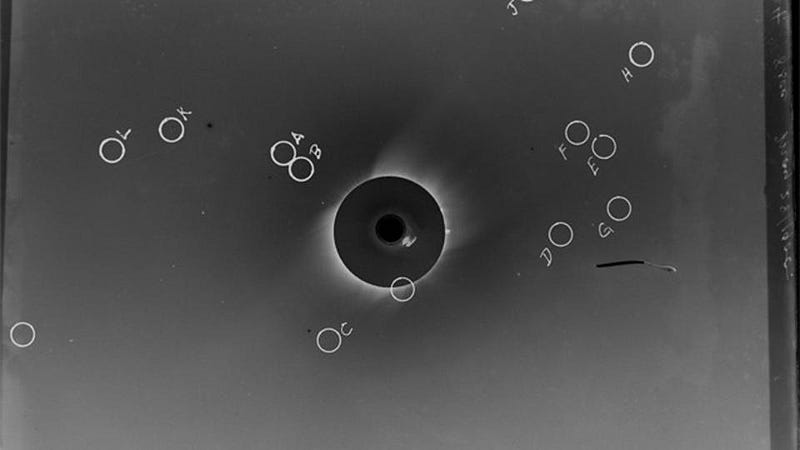
Photographic plates of the Sun during a total solar eclipse had revealed not only details in the Sun’s corona before, but the presence and positions of stars during the daytime. However, none of the pre-existing photographs were of high enough quality to determine the positions of the stars to the necessary accuracies; the deflection of starlight is a very small effect requiring very precise measurements to detect! After Einstein set forth his general theory of relativity in 1915, there were a few chances to test it: 1916, which World War I interfered with, 1918, where attempted observations were defeated by clouds, and 1919, which is where the first successful test took place.

The results of those observations was compelling and profound: Einstein’s theory was right, while Newton’s broke down in the face of the bending of starlight by the Sun. Although the data and analysis was controversial, as many accused (and some still accuse) Arthur Eddington of “cooking the books” to get a result that confirmed Einstein’s predictions, subsequent eclipses have shown definitively that General Relativity works where Newton’s gravity does not. In addition, careful reanalysis of Eddington’s work shows that it was, in fact, good enough to confirm the predictions of General Relativity. The features in newspapers around the world trumpeted this tremendous success.
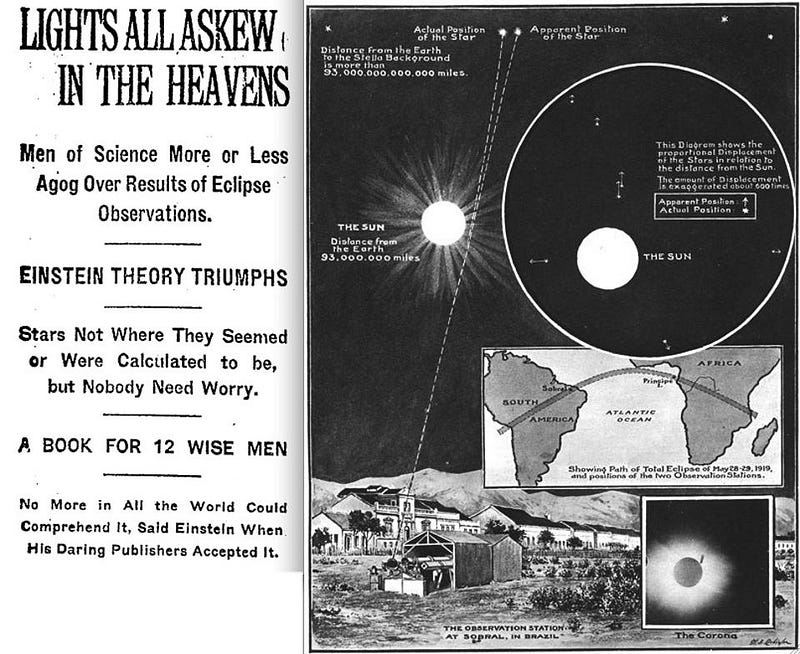
Today, of course, multiwavelength technology has advanced to the point where we don’t even need a solar eclipse to measure the relativistic bending of light; very long baseline interferometry, using radio waves, can measure the bending of distant sourcesthroughout the year. The results are incredible and definitive, and can measure deflections down to a thousandth of an arc-second.
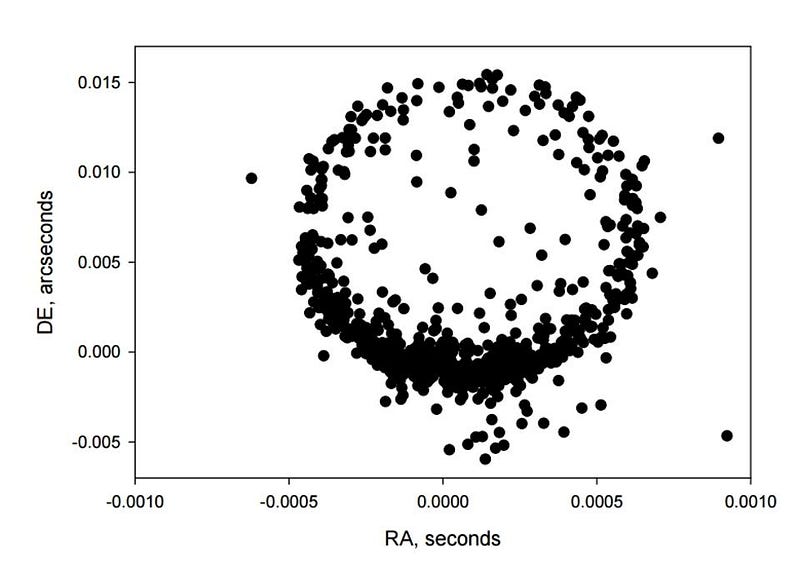
The solar eclipse that comes to the United States on August 21st, 2017, will put on a spectacular show across more than a dozen states, where tens of millions of people are anticipated to flock to experience totality. During those moments when the Sun is blotted out by the Moon, if your skies are clear, look nearby to the Sun, just past the edge of the visible corona. You’ll see a pinprick of light just over 1° from the edge of the Moon; that’s the 21st brightest star of all, Regulus, that simply happens to be so close to the Sun right now.

When you see it, know that it’s light is deflected by just a tiny amount from its true position by the Sun’s gravity, and that an accurate enough measurement could once again prove Einstein right and Newton wrong. If we forgot everything we knew about science today, we could figure it all out again, from scratch, tomorrow. On August 21st, you’ll get a glimpse of one of the greatest cosmic truths ever discovered by humanity. Don’t miss it.
Ethan Siegel is the author of Beyond the Galaxy and Treknology. You can pre-order his third book, currently in development: the Encyclopaedia Cosmologica.





